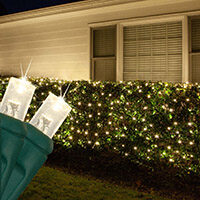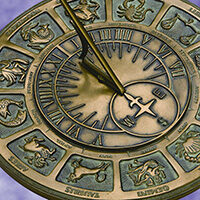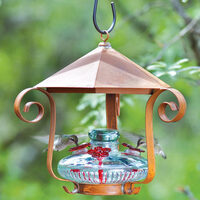The Good Purple Martin Landlords Guide: Understanding your Visiting Birds
Purple Martins are one of the most wanted wild birds in North America and they rely almost entirely on human support for nesting homes. Providing the proper Purple Martin Bird House is extremely important, and both beneficial and rewarding. Purple Martins have been a friend of man for centuries, and can be dated back to a time when the Native American's would lure the birds to their villages with gourds for nesting. Recent urbanization of America has created a decrease in the once natural nesting locations found in hollow trees, and Americans have committed to working together to offer man-made housing and nesting locations.
Purple Martin Characteristics
Male and female martins have different plumages, although the different patterns do not emerge fully until adulthood. The image above shows a male martin on the left and a female martin on the right. Take note of how the male has a dark blue/black coloring and a larger body size. His coloring is unmistakable, and is the reason behind how the purple martin got its name. The female is smaller, with a less uniform coloring and a pale gray underside. The adult female tends to have subtle purple throughout the backside, while the younger females are typically more brown.
Purple Martins have a wide and flat black beak, a forked tail, and broad, knife like wings. Their aggressive and powerful enemy is the European Starling, which possesses a long and pointed yellow beak and sharp claws. The threatening house sparrow also has a dangerous beak, heavy and conical shaped, and capable of crushing with ease.

Purple Martins
Weather must be taken into consideration when becoming a Purple Martin landlord. To follow food sources, Purple Martins travel to warmer climates for the winter, and return to the United States every spring and summer. Purple Martins can be found all through the United States and southern Canada. Wooden Purple Martin homes are best in regions with moderate summers and shady areas, since too much heat is hazardous to baby martins who can not leave their nest, and cold will reduce the insect supply, causing martins to perish within days. Aluminum Purple Martin homes are the ideal solution for hot summer heat, reflecting sunlight and keeping the inner compartments cooler than wood and metal will. Aluminum martin houses are also non-porous so they will not harbor mites and other parasites which can harm young martins.
When weather turns cold or excessive rainfalls last more than a couple days, martins may need to receive supplemental nutrition, such as mealworms and baby crickets. New England locations require some additional love and patience, and the first year with a martin house may only find a few house hunters and temporary renters.
Purple Martin Houses: Providing Safety with the Right Style House
Choosing the proper home for the Purple Martin involves understanding the martin and its predators. Every year martins perish from attacks by starlings, House Sparrows, and owls. Martins will not return to their home if it falls victim to predation. Sparrows and Starlings are aggressive birds who have taken over Purple Martin homes on a massive scale, which has lead to the decline of the martin population. Look for Starling-resistant Purple Martin houses, which have openings too small for the predators, but large enough for martins to get in and out.
Martins are a very social bird, and prefer apartments with many rooms and openings. Double compartment houses prevent owls and hawks from looking in and seeing nests and baby birds. Seek martin homes with perches so the younger, clumsier martins can keep a foothold and not fall prematurely to the ground.
Where to Place your Purple Martin House
Martins prefer to be near human activity, and colonies thrive when Purple Martin houses are placed near homes and busy locations such as restaurants, resorts, and busy towns. Martins are attracted to white and other light colors, so white gourds and houses are very popular. To ensure an engaging relationship with your martins, keep your Purple Martin bird house near where you spend time. The martins will become used to your presence throughout your daily activities, and will be less likely to fly away when you want a closer look. You will be able to enjoy the purple martin's songs and activities in close proximity.Purple Martins have a high level of site fidelity, so if their home is still available and their breeding ground was safe the year prior, the birds will return to their previous year's home.
Purple Martin houses should be placed high, using a pole that can allow the house to be brought down for inspection and cleaning. Baffles will prevent animals from climbing the poles to attack the birds. Purple Martins will carry their waste sacs far from their nests before releasing them in an effort to keep their homes from being noticed by predators.
Purple Martins have received much press and been the center of many debates throughout the years, and for good reason. They are a lovely bird, a friend to humans, and dedicated to their homes. Purple Martin societies, organizations, and clubs exist country-wide, and information is readily available for all aspects of housing the birds. It is easy and fun to commit to owning a single or several Purple Martin bird houses, and there is advice available to help every step of the way.
Information on the proper care of Purple Martins can also be found by visiting The Cornell Lab of Ornithology.






















